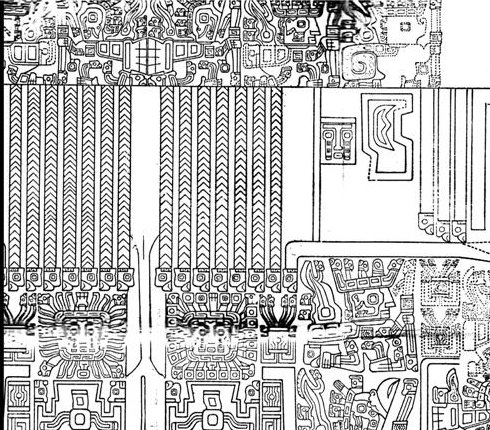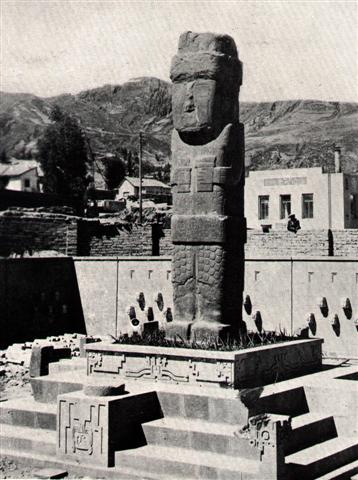126. On side b of the G tablet heliacal Adhil (the Train on the Garment of Andromeda) came 264 days after Ga2-26 (56) at nakshatra τ Aquilae (*303.8), and the design of Gb3-90 (320 = 56 + 264) was certainly intended to connect heliacal Adhil (99) with nakshatra τ Aquilae (383 = 99 + 284):
The Eagle landed in July 19 (200) because at that time of the year he could be observed in the background of the Full Moon, and 185 days earlier, in January 15, Altair had taken the Old Sun in his claws and lifted him up into the sky, following the Milky Way River all the way down to July, there to deposit him at the Gate of Gemini.
... Men's spirits were thought to dwell in the Milky Way between incarnations. This conception has been handed down as an Orphic and Pythagorean tradition fitting into the frame of the migration of the soul. Macrobius, who has provided the broadest report on the matter, has it that souls ascend by way of Capricorn, and then, in order to be reborn, descend again through the 'Gate of Cancer'. Macrobius talks of signs; the constellations rising at the solstices in his time (and still in ours) were Gemini and Sagittarius: the 'Gate of Cancer' means Gemini ... 264 was the number of days from nakshatra τ Aquilae (*303.8) to heliacal Adhil (*19.3) because 365¼ + 19.3 - (*303.8 - 183) = 263¾. And it was easy to remember because 264 = 364 - 100. July 19 (200) + 264 = 464 (April 9). ... In China, every year about the beginning of April, certain officials called Sz'hüen used of old to go about the country armed with wooden clappers. Their business was to summon the people and command them to put out every fire. This was the beginning of the season called Han-shih-tsieh, or 'eating of cold food'. For three days all household fires remained extinct as a preparation for the solemn renewal of the fire, which took place on the fifth or sixth day after the winter solstice [Sic!]. The ceremony was performed with great pomp by the same officials who procured the new fire from heaven by reflecting the sun's rays either from a metal mirror or from a crystal on dry moss. Fire thus obtained is called by the Chinese heavenly fire and its use is enjoined in sacrifices: whereas fire elicited by the friction of wood is termed by them earthly fire, and its use is prescribed for cooking and other domestic purposes ... Like archaic China and certain Amero-Indian societies, Europe, until quite recently, celebrated a rite involving the extinguishing and renewal of domestic fires, preceded by fasting and the use of the instruments of darkness. This series of events took place just before Easter, so that the 'darkness' which prevailed in the church during the service of the same name (Tenebrae), could symbolize both the extinguishing of domestic fires and the darkness which covered the earth at the moment of Christ's death. In all Catholic countries it was customary to extinguish the lights in the churches on Easter Eve and then make a new fire sometimes with flint or with the help of a burning-glass. Frazer brings together numerous instances which show that this fire was used to give every house new fire. He quotes a sixteenth-century Latin poem in a contemporary English translation, from which I take the following significant lines: On Easter Eve the fire all is quencht in every place, // And fresh againe from out the flint is fecht with solemne grace. Then Clappers cease, and belles are set againe at libertée, // And herewithall the hungrie times of fasting ended bée ... The 5th or 6th day after the northern winter solstice should be December 26 (360) or December 27 (361). We can in our minds combine this ancient Chinese custom with Altair if we count from the time of Betelgeuze, because FEBRUARY 4 was 84 days after NOVEMBER 12:
... The Sacred Book of the ancient Maya Quiche, the famous Popol Vuh (the Book of Counsel) tells of Zipacna, son of Vucub-Caquix (= Seven Arata). He sees 400 youths dragging a huge log that they want as a ridgepole for their house. Zipacna alone carries the tree without effort to the spot where a hole has been dug for the post to support the ridgepole. The youths, jealous and afraid, try to kill Zipacna by crushing him in the hole, but he escapes and brings down the house on their heads. They are removed to the sky, in a 'group', and the Pleiades are called after them ...
But as these 400 'youths' (ga kope - cfr nga kope ririva tutuu vai a te taanga in Manuscript E) became the Pleiades we should rather count from MAY 16 (400 - 264) and nakshatra τ Aquilae. ... tau is the 19th letter of the Greek alphabet. In the system of Greek numerals it has a value of 300 ... Taw is believed to be derived from the Egyptian hieroglyph meaning 'mark' ... Taw, Tav or Taf is the twenty-second and last letter in many Semitic abjads ... In gematria Tav represents the number 400, the largest single number that can be represented without using the Sophit forms ... The father of Hotu A Matua was Matua A Taana and his grandfather was therefore Taana A Harai:
Then, in order to complete the cycle without jumping from the nakshatra view to the heliacal structure we should use the position of nakshatra Spica:
When Spica was at the Full Moon in April 9 it meant there was no risk for the Sun to be buried. It was safe to let the calendar begin anew at the winter solstice, to return to the origin.
3 days of cold food were followed by the renewal of fire in December 26 (360) or December 27 (361). April 13 (4-13 → 14 * 29½) was the unlucky day number 4 after April 9 (400) and therefore the 3 days of cold food should have been served in FEBRUARY 1, 2, and 3.
365 + 31 = 396 should therefore be the number of days when the food was served warm: ... Counting again in the undulating tresses of Pachamama - after having realized it was probably the number of apexes which mattered - the intended order indeed comes clearly into view ...
|
||||||||||||||||||||||||||||||||||||||||||||||||||||||||||||||||||||||||||||||||||||||||||||||||||||||||||||||||||||||||||||||||||||||||||||||||||||||||||||||||||||||||||||||||||||||||||||||||||||||||||||||






